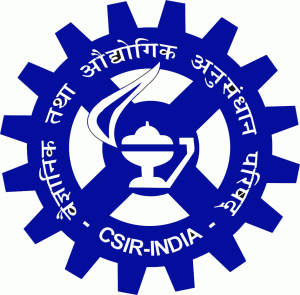top of page

You Can Find Us Here:
Research Areas
The area of our research is interdisciplinary in nature comprising the fields of synthetic inorganic, organometallic, polymer and materials chemistry. The main interest of our research is on synthesis and characterization of multifunctional organometallic complexes and polymers with special focus on conjugated metallopolymers and their emerging applications in alternative energy source, which is of intense scientific and technological interest. Developing functional side-chain metallopolymers is also of our current research focus.
OMW

Organometallic Molecular Wires...
The growing interest in π-conjugated “Molecular wires” having extensive π delocalization have been diverse area that attract the researchers to develop new smart and functional materials applicable in molecular scale electronics. One of the important aspect of such molecular wires with redox active metal-termini is the metal-metal communication and electronic delocalization through molecular backbone offering NIR absorbing materials. The good matching of energy between the metal filled dπ-oribitals and the π*-orbitals of organic bridges are essential for efficient electron-transfer processes. At this level our research efforts focus to develop molecular wires of the type trans-[–M(L)2C≡C(Ar)C≡C–]n (L = ancillary ligands, Ar = aromatic spacers, M = transition metal cation) that allow the electronic communication in its metal termini. Different metal precursors with judicious designing of bridging spacers are synthesized to construct these organometallic wires. A combination of electrochemical and theoretical studies have been employed to evaluate the electronic delocalization.
Collaborator for Theoretical Studies: Dr. Sabyashachi Mishra (Dept. of Chemistry, IIT Kharagpur)


Multifunctional Main-chain and Side-chain Metallopolymers...
Metal-containing polymers, a new class of emerging polymers, are inorganic polymers that incorporate transition metals into the main chain or side of the polymeric backbone. The metallopolymers are unique class of hybrid materials that synthetically incorporate metal centres into organic polymers, thereby taking advantage of the beneficial properties of inorganic metal complexes (catalysis, optics, electronics, redox, magnetism etc.) and organic materials (easy processability, flexiblity and low weight). The metallopolymers have been realized as next generation materials for applications in photonic crystal display, redox-stimuli smart materials, precursor to magnetic ceramic materials, self-assembled functional materials, self-healing materials, sensing and catalytic applications. Our research focuses on designing and synthesis of metallopolymers for exploring their exciting applications in the direction of redox-stimuli smart materials, precursor to magnetic ceramic materials, self-assembled functional materials, self-healing materials, sensing and catalytic applications.


metallopolymer

π-Conjugated Polymers for Opto-electronics...
The more applied side of our work involves the development of low band-gap (Eg) π-conjugated p-type hydrophobic semiconducting polymers for their extensive optoelectronic applications such photovoltaics and OLED. Our research, in this field, focuses on developing low band-gap polymers by judicious incorporation of D-π-A moieties. Currently, we are working on non-fullerene bulk heterojucntion (BHJ) all-polymer solar cell employing p-type and n-typepolymers. Developing π-conjugated donor-acceptor polymeric dyes for polymer sensitized solar cells (PSSCs) is another current research interest in our group.

optoelectronics

Designing of Multifunctional Terpyridyl Conjugates for Catalysis, Sensory Applications and Beyond...
The archetypical tridentate 2,2':6',2''-terpyridyl ligands (tpy), functionalizable at 4’-position and its metal complexes have recently expanded its versatility in various fields of opto-electrochemical, optoelectronic, supramolecular chemistry and in catalysis. Apart from catalytic and gelation of in the presence of suitable metal ions our effort is also extended to develop fluorescent probes for the efficient and submicromolar detection of biologically and environmentally concerned analytes such as explosive NACs and toxic heavy metal ions. Judicious installing of arylene-vinylene and BODIPY fluorophores to terpyridyl unit provides a successful strategy for the targeted applications.

chemosensory

Designing BODIPY Based Fluorophores to Access Organic Lasers...
Organic dye lasers have quickly evolved into an important class of lasers because of their clear advantages over other commercially available laser sources. One of the most important features of dye lasers is that they can be tuned to a range of wavelengths for the desired application. Although various types of synthetic dyes have been employed in recent years for use in different wavelength regions, highly efficient organic materials that exhibit comparable or superior laser performance in terms of efficiency, tuning range and photostability are still strongly desired in the development of dye lasers. The family of borondipyrromethene (BODIPY) complexes is the most extensively used laser materials that are known today in both liquid and solid gain media. In this regard, our research interest is to engineering the BODIPY dyes with suitable structural modification to tune their photophysical properties so that a wide region in the electromagnetic spectrum can be covered with narrow-line width laser radiation.
Collaborator: Dr. Shivakiran B. N. Bhaktha (Dept. of Physics, IIT Kharagpur)

organic lasers
metallogels

Multifunctional Metallogels...
Metal ions induced gel formation represents an effective strategy to access self-assembled metal containing soft-materials for various smart applications. Metallogels are one such class of supramolecular gels which utilizes metal complexes or clusters in gel formation. Metallogels represent some of the most intriguing ‘‘smart’’ materials because the incorporation of transition metals into gelator molecules not only integrates the metal characteristics (such as conductive, redox, catalytic or luminescent properties) into the gel, but also provides an additional subtle control of the molecular assembly. Our research work focuses on developing new and novel metallogels for applications as smart materials including the recently growing field of dye-adsorption , gas-sorption studies and catalytic applications.


We gratefully acknowledge the following funding agencies for financial support to our research work.





bottom of page


